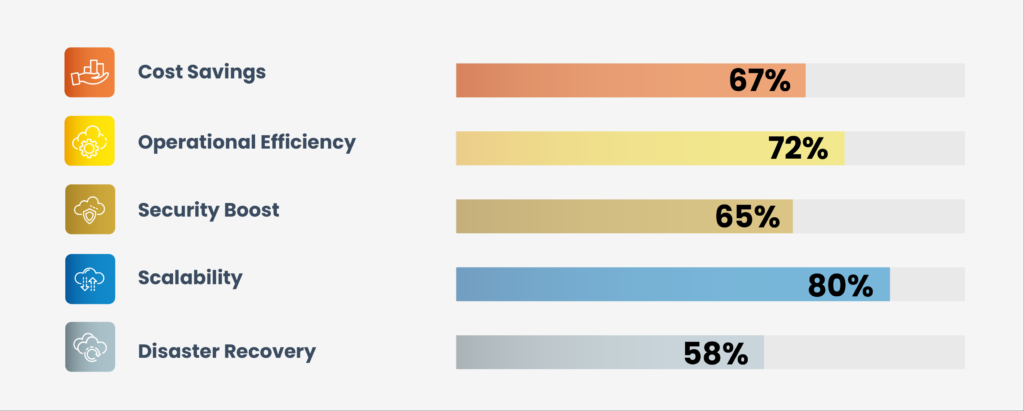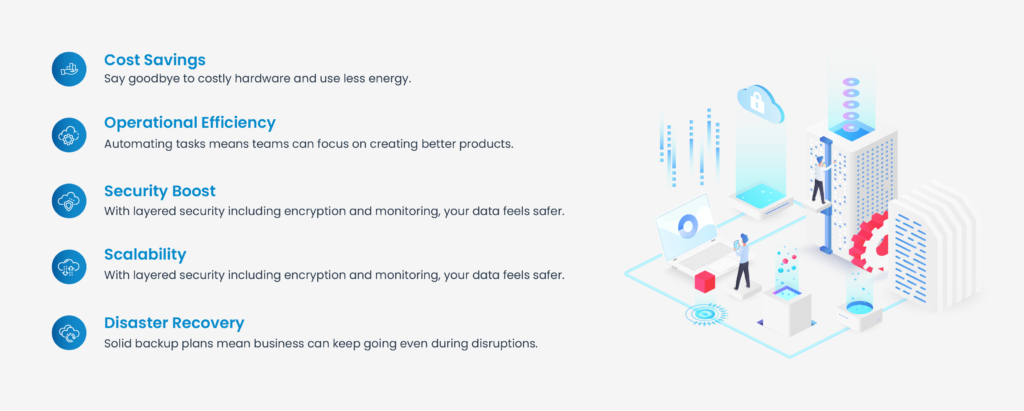
Transitioning to the Cloud is no longer an option—it has become a necessity for businesses. They want efficiency, flexibility, & a better chance to compete. Azure, which is Microsoft’s cloud platform, has become a key player in helping companies modernize their IT systems. But what is this Azure migration, really? Why are companies making this switch?
What is Azure Migration?
Azure migration means taking an organization’s digital assets—like data, applications, and workloads—and moving it from local setups or other cloud services over to Azure. This change brings many benefits. Companies can save money, scale up when needed, gain more flexibility, & better security. As businesses feel more pressure to innovate and work better, moving to the cloud has become super important for growth and staying competitive in today’s fast world.
Why Are Organizations Migrating to Azure?
A 2024 survey from Gartner says 89% of IT leaders think cloud infrastructure is crucial for business agility. Here are some reasons they choose Azure:
- Global Presence: Azure has lots of data centers. This means it stays available & resilient.
- Hybrid Options: Azure makes it easy for businesses to mix their on-site systems with the cloud.
- Smart Tech: Its built-in AI tools help organizations create new options.
By migrating to Azure, businesses also keep up with trends like edge computing & IoT. This mix of factors has made Azure a leading choice for many firms.
The Growing Importance of Cloud Migration
The global cloud computing market is experiencing significant and rapid growth. According to IDC, by 2025, 80% of enterprises will have moved to cloud infrastructure, with Azure holding 22% of the global market share.
Key Benefits of Azure Migration (Survey Results)
In a recent survey about 500 companies that moved to Azure:

Azure offers different services like Infrastructure as a Service (IaaS), Platform as a Service (PaaS), & Software as a Service (SaaS). This means both small startups & big enterprises find what they need. Whether you need more computing power or tools for app development, Azure helps organizations work better while saving money & supporting digital innovation.
1] Understanding Azure Migration: The Basics
So what’s Microsoft Azure?
Microsoft Azure is a big cloud platform that has tons of services like computing, storage, networking, databases, AI tools, and IoT solutions. It has data centers all over the globe which allows businesses flexibility in managing their applications anywhere. Plus, it supports hybrid models so firms can blend their old systems with new cloud ones.
Azure features:
- IaaS: It gives essential computing resources based on how much you use.
- PaaS: This lets programmers create apps without worrying about hardware.
- SaaS: Organizations can access software hosted in the cloud without managing the backend.
These features make Azure vital for companies wanting to modernize their IT systems & make use of new technologies like AI and big data.
Why Migrate to Azure?
There are many reasons why moving to Azure is smart:

2] Key Considerations Before Migration
Assessing Readiness for Migration
Before jumping into a cloud project, check how ready your team is! This means looking at existing workloads and applications to see what’s good to move & what needs work first. Azure provides several tools, such as Azure Migrate, which assist organizations in performing detailed assessments of their IT environments.
Key steps include:
- Analyzing current workloads for direct migration or refactoring needs.
- Noticing dependencies between apps.
- Checking security needs to ensure compliance with rules like GDPR or HIPAA.
Choosing a Migration Strategy
Each organization has different needs while migrating:
- Rehost (Lift and Shift): Move workloads quickly with few changes.
- Refactor: Slightly modify applications so they fit with the cloud better.
- Rearchitect: Make significant changes so apps use full cloud abilities.
- Rebuild: Starting anew using only cloud-native technologies makes sense too.
McKinsey 2024, Survey Highlight: Organization Adoption Rate for Cloud Migration
| Strategy | Description | Adoption Rate |
| Rehost (Lift and Shift) | Moving existing workloads with minimal changes | 43% |
| Refactor | Slight modifications to applications to better fit cloud environments | 30% |
| Rearchitect | Significant changes to architecture, using cloud-native technologies like microservices | 17% |
| Rebuild | Completely rebuilding applications to be cloud-native | 10% |
Every option has pros & cons; think about budget and goals!
Understanding Workload Dependencies
Getting successful migration means understanding connections between workloads! Ignoring these dependencies might lead to issues in service or performance hiccups later on.
Security and Compliance
Security is super important when moving clouds! Luckily, Azure has many tools for securing workloads during migration and after—like encryption & identity checks. Plus, organizations can meet regulatory requirements since Azure supports lots of compliance frameworks such as HIPAA or GDPR.
3] The Azure Migration Process: Step-by-Step Guide
Step 1: Assessment
The adventure begins by checking out the current IT setup! You can use tools like Azure Migrate for analyzing workload performance and requirements.
Step 2: Planning and Strategy Development
A great plan is important! You want a timeline that shows who’s doing what—deciding what comes first helps too!
Key points:
- Break down each phase of migration into specific steps.
- Give team roles clearly.
- Set milestones along the way!
Step 3: Migration Execution
Now comes time to do the action! Use tools provided by Azure like:
- Azure Site Recovery: It helps replicate data safely during changes!
- Azure Database Migration Service: Easy database transfers with minimal downtime!
Keep everything running smoothly while testing continually.
Step 4: Post-Migration Optimization
After getting everything moved over—keep an eye out! Monitoring costs & performance helps you optimize how things run day-to-day.
4] Challenges in Azure Migration and How to Overcome Them
Moving online? It’s not always easy! Here are some challenges:
- Data Movement Issues: Transferring tons of data can take ages—especially legacy systems!
- Downtime Risks: Moving key systems risks messing up operations!
- Legacy Integration Troubles: Older systems may not play nice with newer setups!
How can we tackle these?
- Plan thoroughly! A strong plan including emergency backups helps avoid messes!
- Test Out Workloads: Give them a trial run before full moves!
- Seek Help from Experts: Skilled folks make things smoother!
Conclusion: Your Path to Success with Azure Migration
Azure migration isn’t just changing tech—it’s gearing up your business for growth ahead! Cutting costs while boosting scalability & security makes it ideal in today’s fast-paced world. At NewVision, we understand that every business has its own unique journey to the cloud. Our cloud solutions ensure a smooth and secure transition to Azure, helping you stay competitive and innovative in the digital age. Keen on starting your move into the cloud?
Let’s connect! Learn how NewVision helps your business tap into everything that Azure provides for thriving next steps!

